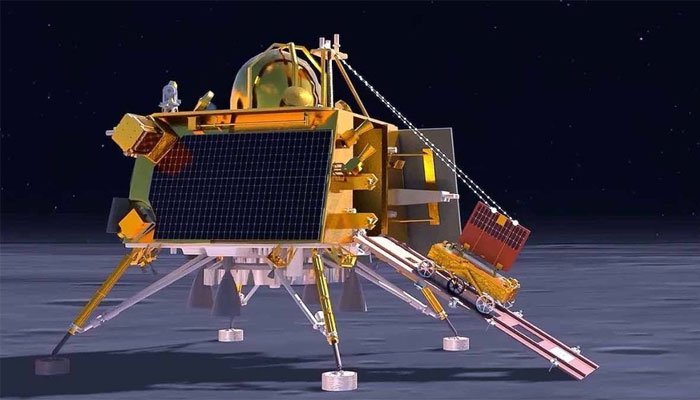Vikram Lander successfully performs another soft landing on the Moon, undergoes ‘hop’ experiment

[ad_1]
On 4th August, the Indian Space Research Organisation (ISRO) announced that Vikram Lander had exceeded its mission objectives as it landed again on the moon’s surface after elevating itself by 40 centimeters and traveling to another location nearby.
Chandrayaan-3 Mission:
🇮🇳Vikram soft-landed on 🌖, again!Vikram Lander exceeded its mission objectives. It successfully underwent a hop experiment.
On command, it fired the engines, elevated itself by about 40 cm as expected and landed safely at a distance of 30 – 40 cm away.… pic.twitter.com/T63t3MVUvI
— ISRO (@isro) September 4, 2023
In a tweet, ISRO wrote, “Vikram soft-landed on the moon, again! Vikram Lander exceeded its mission objectives. It successfully underwent a hop experiment. On command, it fired the engines, elevated itself by about 40 cm as expected, and landed safely at a 30–40 cm distance.”
“Importance?: This ‘kick-start’ enthuses future sample return and human missions! All systems performed normally and are healthy. Deployed Ramp, ChaSTE and ILSA were folded back and redeployed successfully after the experiment,” ISRO added.
As per ISRO’s statement, the command station sent a command to fire the engines, resulting in an elevation of around 40 cm, as expected. The Lander landed at a distance of 30-40 cm away from its original position. Such experiments hold utmost importance as they kick-started future sample returns and human missions that India hopes to achieve in the next decade. All the systems in Vikram Lander performed nominally and are healthy. After the experiment, the Deployed Ramp, ChaSTE and ILSA were folded back and redeployed successfully.
Chandrayaan-3 soft-landed on the south pole of the Moon on 23rd August. Currently, Vikram Lander and Rover are in sleep mode. Initially, ISRO expected that the Lander and the rover would last up to one lunar day, which is equivalent to 14 Earth days. However, recent developments indicate that ISRO has been trying to help the Lander and rover survive the harsh moon night that lasts 14-odd days. If it succeeds, the payload can continue to perform scientific experiments for another lunar day. Notably, during the lunar night, the temperature falls below -200 degrees Celsius, and the system can get jammed due to freezing temperatures.
[ad_2]
Source link



